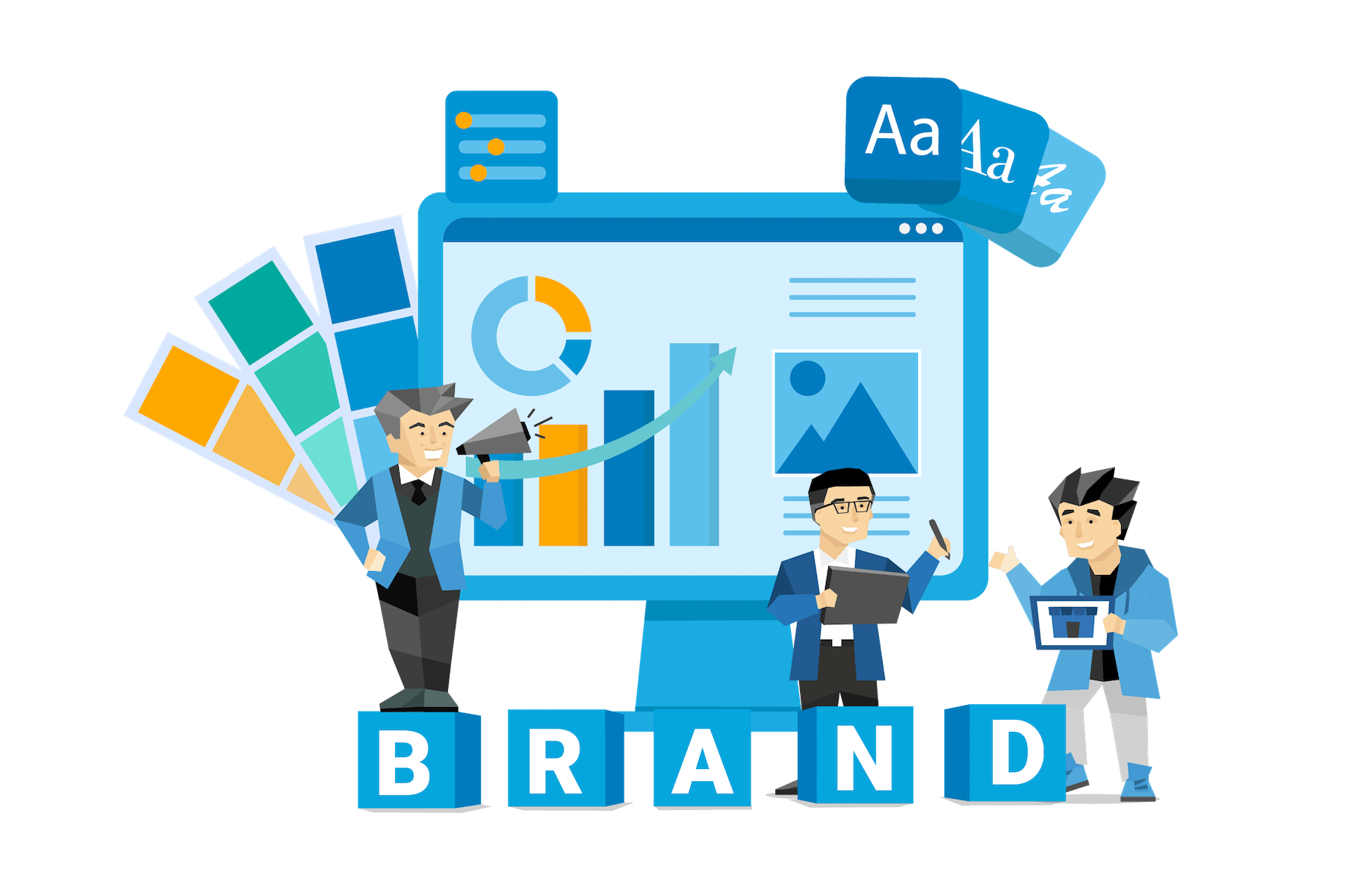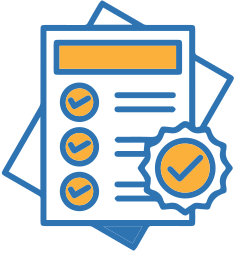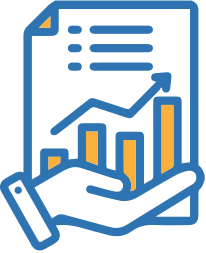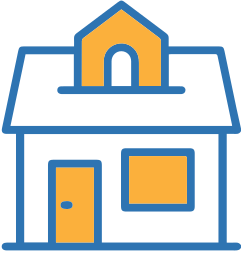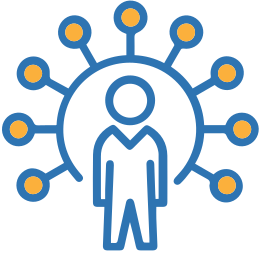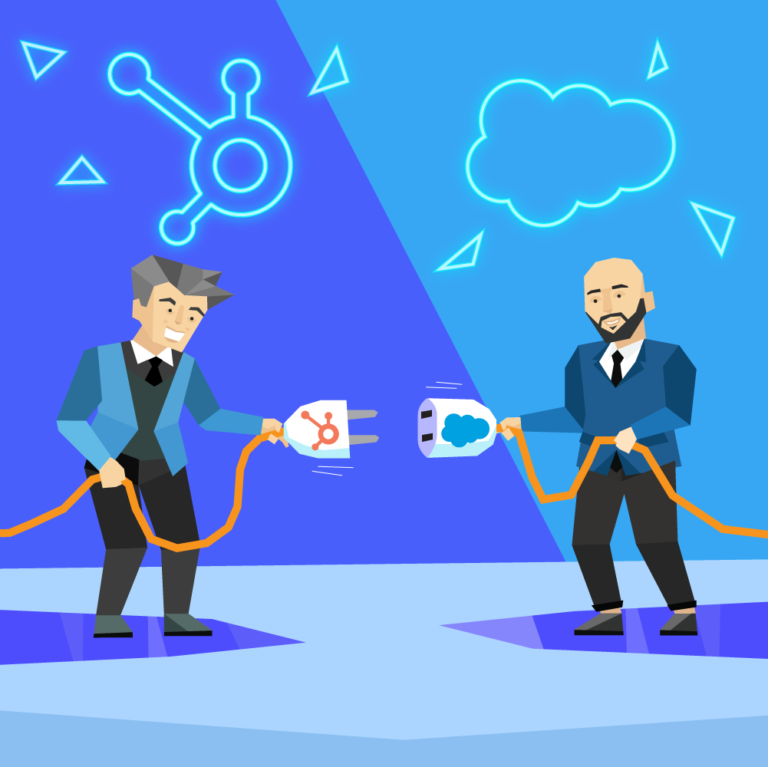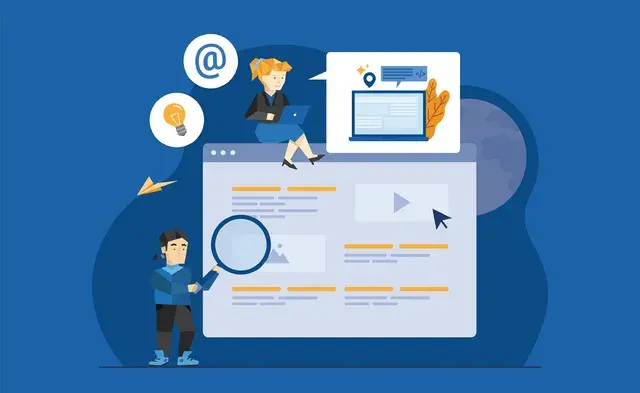Building a New Website
Inbound marketing is a cost-effective, long-term marketing strategy that focuses on positioning your company online to be found by your target audience. In order to implement a successful inbound marketing strategy, a website is absolutely imperative. Your website is essentially your virtual storefront. It’s the most important presence that you can establish online and it’s the place where you will host the majority of your content. All of your inbound marketing efforts will depend on your website to succeed.
Without a website, you’ll have next to no presence on search engines. Not only will this make it difficult for existing customers or prospects who are aware of your business to find you online, but it will make it impossible for your target audience to discover your brand, which means you’ll toil away in online anonymity, causing your company’s growth to stagnate.
With the understanding of how critical your website is to your potential success, it’s important that you don’t cut corners. You could save money by doing the absolute bare minimum as far as your website is concerned, but this will severely limit how effective your inbound marketing strategy could be. Not only do all of your online marketing efforts rely on your website, but your website reflects your brand and it’s identity. The impression that visitors have of your website when they visit will affect the perception that they have of your company.
Because of how important your website is over the long-term, it’s worth investing time and money into ensuring that it’s the best that it can be. You want to have a website that provides visitors with the best possible user experience to improve your chances of converting visitors into leads and eventually into customers. The best way to achieve this is by building your website from scratch using the Growth Driven Design framework.
Traditional Web Design vs. Growth Driven Design
When it comes to building a website from the ground up (which will allow you to customize and optimize every aspect of your website), there are two options. You can build a website the traditional way or you can implement Growth Driven Design into your website efforts. Traditional web design is the process that has been used ever since website design was a possibility; however, Growth driven design is a comparatively newer process that has become more and more popular over the past five or six years.
Traditional Web Design
Traditional web design involves building the entire website at once. In order to ensure that the website is successful, this requires you to define your marketing goals and website goals before you begin to build your website’s wireframes. The design of the website will end up being completely subjective, meaning that it will be based on what you think your customers’ needs are. Generally speaking, building a website using a traditional web design can take anywhere from three to six months. Only once the website is completely built can you launch it. If you don’t plan the website carefully, you could be in trouble if you end up launching a website that doesn’t meet the needs of your audience, especially since a large sum of money has to be invested upfront to build your website to completion.
Growth Driven Design
The major difference between traditional web design and Growth Driven Design is that Growth Driven Design involves building the website in phases. It’s a more long-term strategy compared to traditional web design. The way it works is that a basic website is designed with only the features that are considered absolutely essential. This basic website, known as a launch pad site, is launched as is. The rest of the website will be completed in iterations over a long period of time while the website continues to be live. This allows you to use data collected by your website to adjust your design strategy and goals as needed and to continually make improvements that will increase the likelihood of success.
Traditional web design is completed within two stages: the planning stage and the completion stage. Growth Driven Design involves three stages: the planning stage, the launch pad stage, and the continuous improvement stage — and the continuous improvement stage never really ends. It’s repeated iteratively over time.
The Benefits of Growth Driven Design
Although building your website using traditional web design might seem more efficient (despite the fact that it takes longer to launch since you’re building the entire website in a single sitting) over the long term, Growth Driven Design will be much more effective. Inbound marketing is a long-term strategy and businesses have begun to realize that growth driven web design is much more suitable for such a strategy than traditional web design. Some of the reasons why more and more organizations are preferring to take the time and effort to implement a Growth Driven Design are below:
Launch website quickly
With a Growth Driven Design strategy, you only need to implement the features that you absolutely must have before launching your website. It can take as little as two to four weeks to take your website live as a result. While it may not be anywhere near it’s finished state, you will at least have an online presence that can have an impact attracting new leads. A traditional web design can take anywhere from three to six months to complete, and this is without taking into account potential delays, changes in strategy, or other setbacks. It’s not uncommon for a traditional web design to go over schedule due to all the work that’s required to launch a website that’s 100 percent complete.
Reduce risk
By implementing Growth Driven Design, you reduce your potential risk significantly. This is because if you misjudge the needs of your audience, you can easily make adjustments once the next scheduled phase comes around. If you get it wrong with a traditional web design, you’re out of luck. So the financial risk is huge when it comes to a traditional web design. Your entire web design budget is spent on traditional web design upfront, which means you likely won’t have the money to redesign your website for some time. Since Growth Driven Design is an iterative process, your budget will be spread out. If the initial launchpad website fails, it won’t be that big of a financial hit and you’ll still have plenty of your budget left to correct the mistakes you made.
Continually improve website
Most websites built with a traditional web design will need to undergo a major redesign within a couple of years. Not only is there a chance that their goals and audience needs change, but odds are the website will simply be outdated by then. Growth Driven Design will never really go out of date because you are continually improving it. In fact, many companies make improvements in sprints of two to four weeks. With a Growth Driven Design strategy, you can make improvements based on your user data. Making continuous user-driven improvements will help to enhance the overall user experience of your website.
Remain flexible
If your marketing, sales, or overall business strategy experiences a major pivot, it can be difficult to adapt your website to those changes if you’ve implemented traditional web design since a major overhaul may be required. Making the necessary changes becomes much easier with a Growth Driven Design strategy. Since the process itself is designed to adapt to changing needs, Growth Driven Design provides much more flexibility.
Implementing Growth Driven Design
Even though Growth Driven Design provides businesses with a lot of flexibility and the ability to continuously improve and optimize their website, it still requires a lot of planning and effort. It’s critical that your launchpad website is still effective despite being an unfinished product — and you’ll certainly want your strategy to be pointed in the right direction in regards to your business goals and objectives. Keeping that in mind, these are the steps that we will take to help you integrate Growth Driven Design into your website:
Research
Before we can put a strategy in place, we will do a substantial amount of research to obtain a better understanding of your business, your industry, and your competition. We begin this process by conducting an initial interview and asking discovery questions about your company to understand what your goals and objectives are and who your audience is. During this process, we will also create a list of features and functions that you want the website to have.
Creating a strategy
Using the information that we’ve collected via our research, we will map out the buyer’s journey of your main buyer personas. We will use these buyer’s journeys in the wireframing process. The way the website should be displayed to your ideal customer will rely heavily on how we end up mapping the buyer’s journeys. We will also take into account the goals and objectives you have for your website. Using your list of features and functions that you want for your website, we will also help determine which of these are absolutely essential for the launchpad version of the website.
Designing a launch pad
Once the strategy is in place, we will create the user flows and wireframes. A solid design will be put into place so that we can launch a basic version of your website quickly. As soon as the launchpad site is up and running, we will begin collecting user data so that we can plan what improvements we will make in the following phases.
Learn and improve
We will identify what is working and what isn’t based on user data so that we can make adjustments and improvements during each phase. We will also implement additional features and functionality based on your wish list. Throughout the process, you may decide that you want other features or functionality or that you no longer need certain features or functionality based on the direction your company is taking or on the user data we have collected. Either way, we will continuously improve your website over each iteration to ensure that it will meet your goals and objectives.
Elements of a Successful Website
Whether you ultimately choose a traditional web design or a Growth Driven Design, it’s important that you understand what makes a successful website. In the end, it’s all about the user experience, which is why the following elements are essential to an effective web design:
Aesthetically pleasing
The way your website looks is important. The aesthetic is the first impression visitors have of your website. To ensure that your website is aesthetically pleasing, use a layout that’s not cluttered and easy to scan. Stick to a color scheme that reflects your branding and keep your stylistic choices consistent (such as the type of font you use). VIsual consistency throughout your website is important as it helps make the website experience feel more unified and strengthens your branding efforts.
Easy navigation
Make sure your website is easy to navigate. Visitors who can’t find what they’re looking for are going to grow frustrated. A navigation menu linking to all the major pages of your website should be placed on every page in a location that’s easy to find. Adding a search function will also make it easier for visitors who know exactly what they’re looking for. Finally, implement a site map that contains all of the links to important pages and sections of your site. Not only does this improve user navigation, it also makes it easier for Google to crawl your website.
Responsive design
Many of your visitors will view your website from a mobile device, such as a smartphone or tablet. Building your website using responsive design ensures that it will be properly displayed no matter what the size of the viewing screen is.. Without a responsive design, your website won’t be mobile-friendly, which will frustrate mobile users and hurt your page rankings.
SEO Optimization
Design your website with SEO (search engine optimization) in mind. This includes using relevant keywords to optimize content and page URLs, using internal links throughout your website wherever appropriate, using a responsive design, implementing a site map, and ensuring that your website is technically sound.
Technically sound
The speed at which your website loads affects not just SEO, but your user experience. Every page should load within two to three seconds. Any slower and visitors are bound to abandon your website. To prevent slow loading pages, enable compression, avoid using flash (which mobile devices can’t load), and avoid auto-playing video and audio components. Make sure that there are also no broken links that prevent pages from loading at all.
Security and privacy
Due to all of the user data you’re collecting, it’s important that you maintain the security of your website. To ensure that your data is encrypted, you should use HTTPS encryption. HTTPS ensures that data is delivered using SSL (secure sockets layer) protocol. You should also include a privacy policy that lets visitors know what data you’re collecting and that allows them to opt out. Such a privacy policy helps build trust in your website and can help limit your liability.
A New Website Build Can Help Drive Marketing and Sales Success
Any organization planning to grow their business online will need a website. Building a new website from scratch can help you tailor your website to your specific goals and needs as well as those of your target audience. However, a Growth Driven Design strategy will most likely build a website that can drive the success of your marketing and sales efforts as a result of continuous, user-driven improvement.

